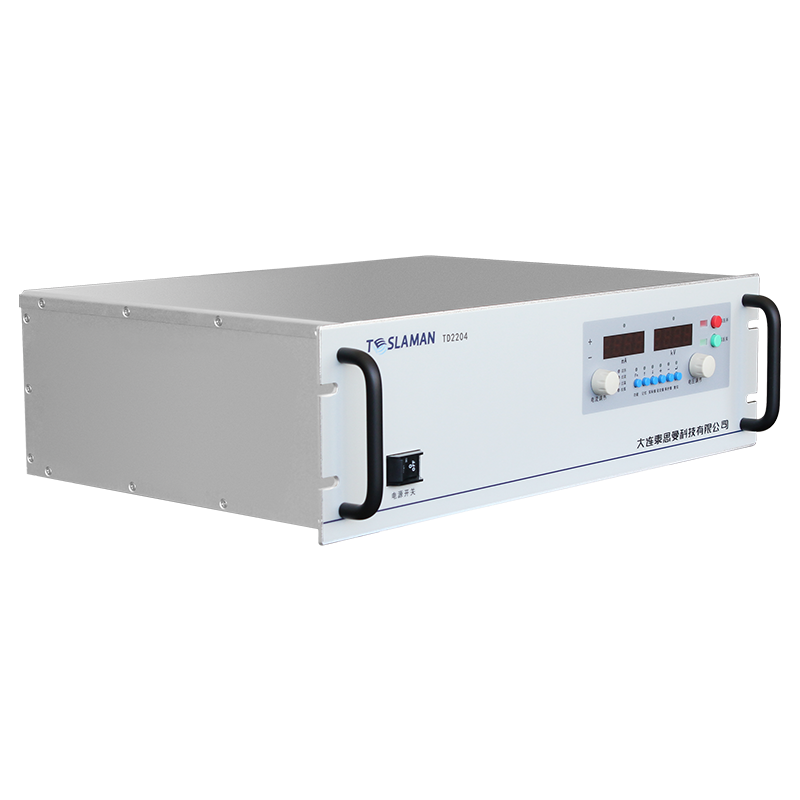Research and Application of Harmonic Suppression Technology for High-Voltage Power Supplies in Etching Equipment
Harmonic Generation Mechanisms and Hazards
The high-voltage power supplies in etching equipment convert industrial-frequency AC power into high-frequency, high-voltage electricity. Core components like rectifiers and inverters (e.g., IGBTs and SiC devices) generate nonlinear currents during switching operations, causing waveform distortion and producing harmonic pollution dominated by odd-order harmonics (e.g., 5th, 7th, 11th). Key hazards include:
Equipment Damage: Harmonic currents cause localized overheating in transformers and capacitors, accelerating insulation aging and potentially leading to capacitor explosions. They also increase torque ripple in motors, compromising etching precision.
System Instability: Harmonics propagating through the grid may trigger parallel resonance (e.g., between capacitor banks and line inductance), resulting in voltage distortion (THDv) exceeding 10% and false triggering of protective relays.
Energy Losses: Skin effect increases line resistance, causing additional losses up to 15% of total load.
Key Harmonic Suppression Technologies
Active Power Filter (APF) Dynamic Compensation:
APF detects load harmonic currents in real-time and injects inverse compensation currents. Core technologies include:
High-Speed Control Chips: FPGA enables rapid harmonic tracking with response times <1 ms and compensation accuracy >95%.
Multilevel Topology: Suitable for high-voltage scenarios (e.g., 10 kV), cascaded H-bridges reduce voltage stress on switches and minimize residual harmonics.
Application: Directly connected to etching equipment inputs for selective compensation of 3rd–19th harmonics from frequency converters.
Hybrid Passive-Active Filtering Systems:
Passive Section: LC tuned filters absorb characteristic harmonics (e.g., 5th/7th) with quality factor Q=30–50, reducing resonance risk via impedance matching.
Active Section: APF suppresses broadband harmonics (>2 kHz) and dampens resonance between passive branches and the grid.
Advantage: 40% lower cost than pure APF solutions, ideal for centralized control of multiple etching units.
Topology Optimization and Soft-Switching:
Rectifier Upgrade: 24-pulse rectification replaces 6-pulse designs, using phase-shifting transformers to cancel low-order harmonics (e.g., 5th/7th harmonics reduced to <5%).
Inverter Control: Zero-Voltage Switching (ZVS) cuts switching losses by 30% while minimizing high-frequency harmonics (>50th order).
Engineering Implementation and Validation
Field data from a semiconductor etching line:
Pre-mitigation: THDi=28.7% (dominant 5th harmonic), capacitor bank failures averaging 3 times/year.
Solution: APF (200A) + 5th/7th passive filters with resonance monitoring modules.
Post-mitigation: THDi<5%, annual energy savings of 127,000 kWh, capacitor lifespan extended to >5 years.
Future Development Trends
Wide-Bandgap Semiconductors: SiC-MOSFETs enable APF switching frequencies >100 kHz, covering ultra-high harmonics (>150th order).
Digital Twin Platforms: Real-time harmonic data builds grid impedance models for dynamic filter optimization and resonance risk prediction.
Conclusion
Effective harmonic control in etching equipment requires combining source-level optimization (topology redesign) and terminal mitigation (hybrid filtering). Multi-technology collaboration achieves THDi≤5%, meeting international standards. Future efforts should focus on suppressing ultra-high-frequency harmonics (>150th order) and implementing adaptive algorithms in high-voltage applications.




















